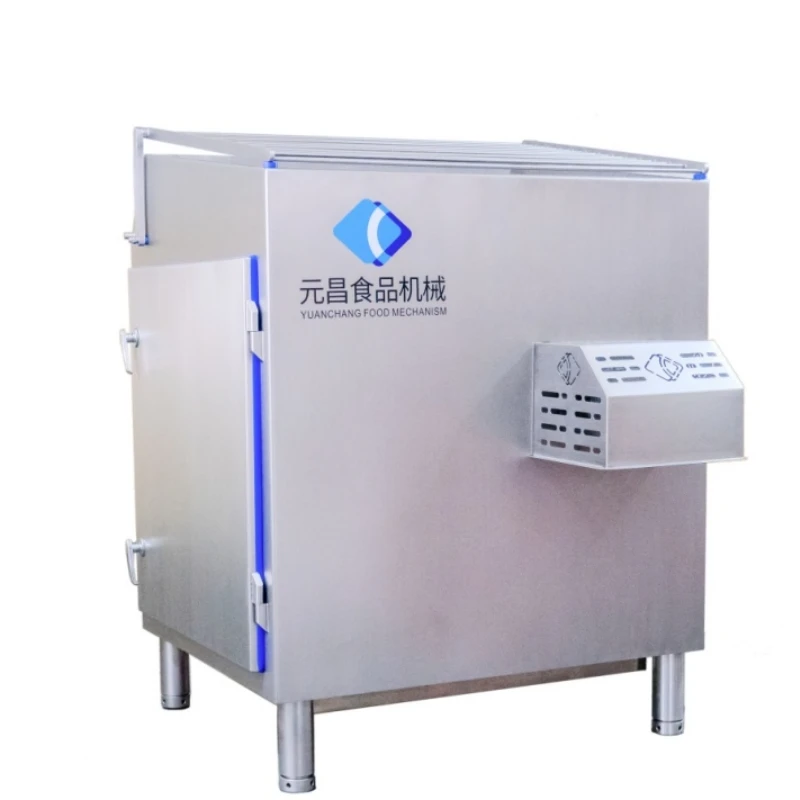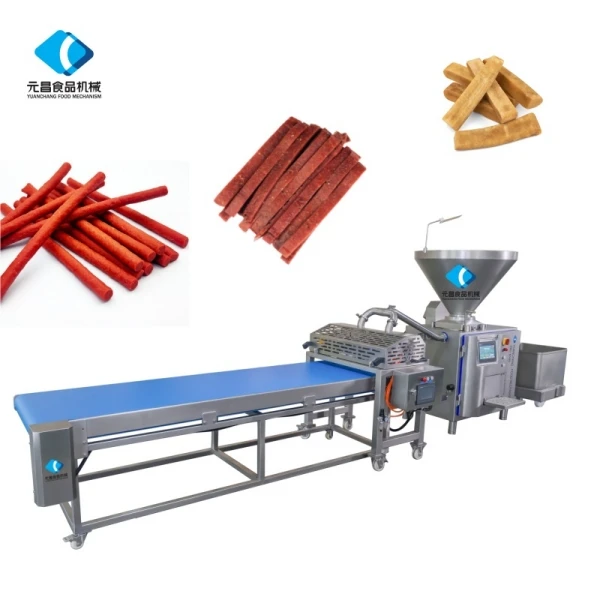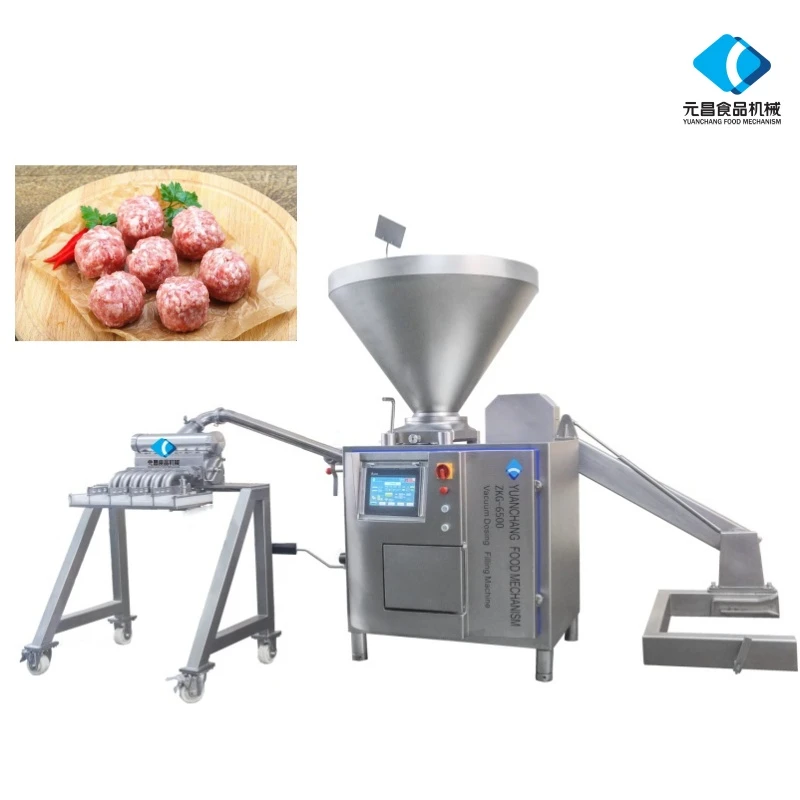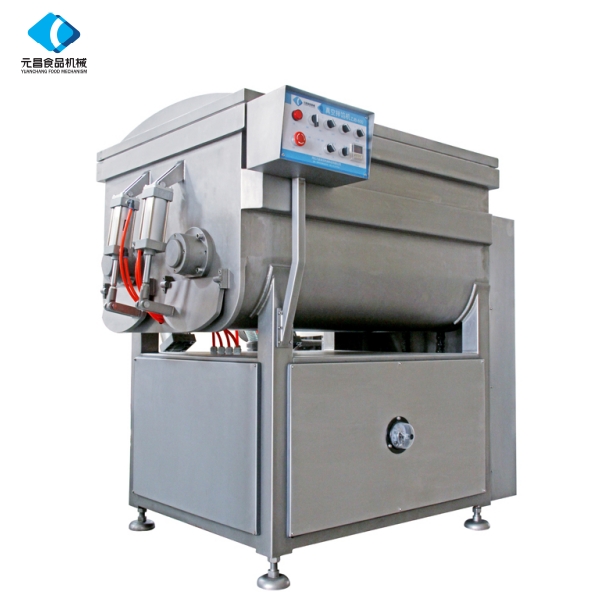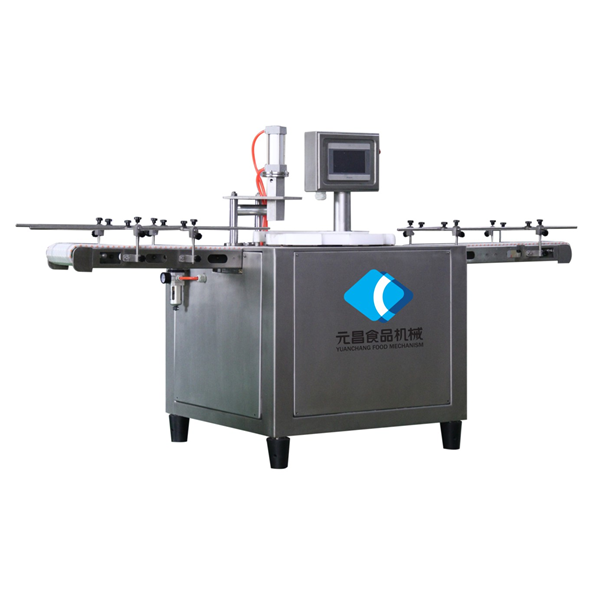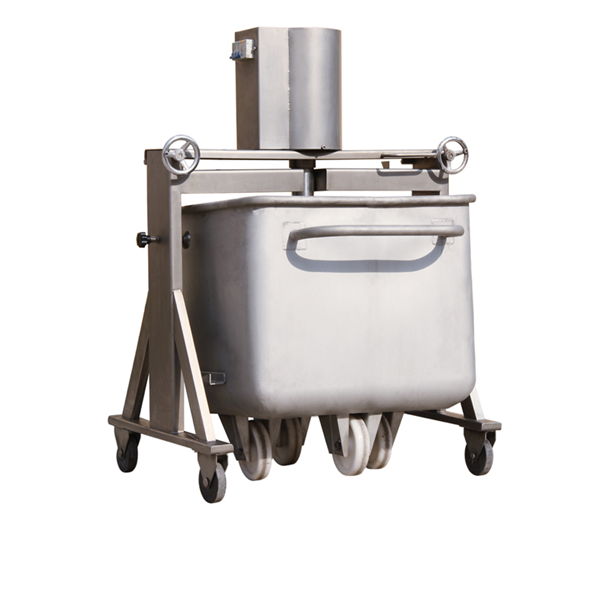Pro Vacuum Tumbler Marinator for Tender Meat & Flavor
Introduction to Vacuum Tumbler Marinators and Industry Trends
In the competitive landscape of food processing, efficiency, product quality, and food safety are paramount. The vacuum tumbler marinator stands as a cornerstone technology, fundamentally transforming how meat, poultry, and seafood are prepared. This advanced meat tumbler machine enhances flavor penetration, tenderization, and overall product yield by leveraging a vacuum environment to open muscle fibers and facilitate rapid absorption of marinades and brines. Its role is critical for businesses aiming to optimize their protein marination processes, reduce processing times, and deliver consistently high-quality products to the market.
Current Industry Trends and Market Drivers
The global food processing machinery market is experiencing robust growth, projected to reach over $70 billion by 2027, driven by increasing demand for processed foods, automation, and stringent food safety regulations. Within this, the segment for marination and tenderization equipment, particularly the vacuum tumbler machine, is seeing significant innovation. Key trends influencing its adoption include:
- Automation and IoT Integration: Modern systems are increasingly integrated with IoT sensors and control systems for precise monitoring of vacuum levels, drum rotation speed, and temperature, ensuring optimal processing conditions and data logging for quality control.
- Enhanced Food Safety: With heightened consumer awareness and regulatory pressures (e.g., HACCP, FDA), features like automated cleaning-in-place (CIP) systems and hygienic stainless steel construction are standard, minimizing cross-contamination risks.
- Sustainable Operations: Energy-efficient vacuum pumps and optimized motor designs are reducing operational costs and environmental impact, aligning with corporate sustainability goals.
- Versatility and Customization: Manufacturers demand machines capable of handling various protein types and batch sizes, often requiring customized drum designs, variable speed controls, and programmable recipe management.
- Clean Label Movement: The ability of vacuum tumblers to significantly reduce marination time and enhance absorption often means less need for artificial tenderizers or flavor enhancers, supporting the growing "clean label" consumer preference.
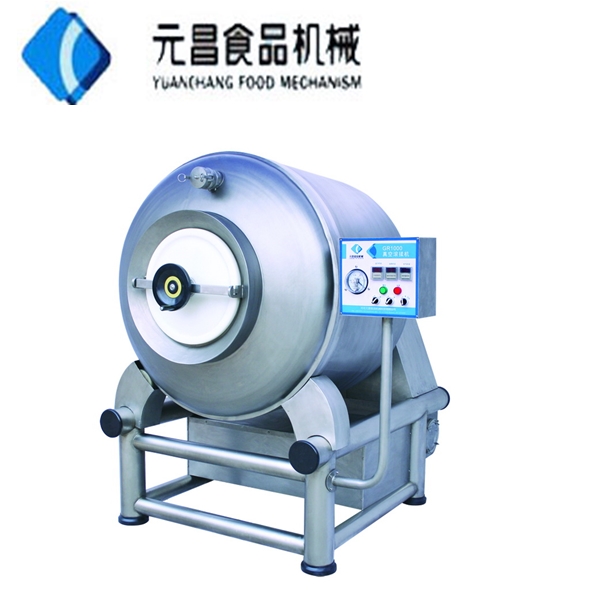
Detailed Process Flow: Manufacturing the Vacuum Tumbler Marinator
The manufacturing of a high-performance vacuum tumbler machine involves a meticulously controlled process to ensure durability, hygienic design, and operational efficiency. From raw material sourcing to final assembly, each stage adheres to stringent quality protocols.
Manufacturing Process Steps:
1. Material Selection & Preparation
All food-contact components are manufactured from high-grade AISI 304 or 316L stainless steel, known for its superior corrosion resistance and hygienic properties. These materials comply with FDA and NSF standards. Raw steel sheets and profiles undergo plasma or laser cutting for precision, followed by deburring.
2. Component Fabrication (Casting, Forging, CNC Machining)
Complex parts, such as critical valve components and specialized fittings, may involve precision casting or forging for enhanced structural integrity. The primary drum and frame elements are formed using advanced bending and rolling machines. Critical interfacing parts, such as bearing housings and shaft couplings, are produced via multi-axis CNC machining, ensuring micron-level tolerances. This precision is vital for the smooth and quiet operation of the marinating tumbler.
3. Welding and Surface Treatment
Components are joined using TIG (Tungsten Inert Gas) welding, which produces strong, clean, and crevice-free welds essential for food safety. All welds are then meticulously ground, polished, and passivated to achieve a smooth, sanitary surface finish (typically Ra < 0.8 µm), preventing bacterial harborage. This stage is crucial for meeting ISO 14159:2008 safety of machinery - hygiene requirements.
4. Assembly and Integration
Mechanical assembly involves integrating the drum, drive system (motor, gearbox), vacuum pump, and control panel. Electrical components, including programmable logic controllers (PLCs), sensors, and human-machine interface (HMI), are carefully wired and configured. All wiring adheres to IEC electrical safety standards.
5. Testing and Quality Assurance
Each chicken tumbler machine undergoes rigorous multi-stage testing:
- Vacuum Integrity Test: Ensures the vacuum system holds target pressure for extended periods, critical for effective marination.
- Operational Performance Test: Verifies drum rotation speed, motor efficiency, and control system accuracy under various load conditions.
- Safety Compliance Checks: All emergency stops, interlocks, and guards are tested according to ISO 12100 and ANSI B11.2 standards.
- Hygienic Cleanliness Verification: Post-production cleaning and inspection to ensure all surfaces meet stringent sanitary requirements.
6. Final Inspection and Documentation
A comprehensive final inspection is performed, followed by the generation of compliance certificates, operational manuals, and maintenance guides.
The typical service life of a well-maintained vacuum tumbler marinator ranges from 10 to 15 years, with critical components designed for easy replacement. Target industries benefiting from these machines include large-scale meat processing plants, poultry farms, seafood processors, and specialized gourmet food producers. Advantages in typical application scenarios include significant energy savings due to optimized vacuum pump cycling, enhanced corrosion resistance from superior stainless steel and passivation, and reduced labor costs through automation.
Technical Specifications and Data Visualization
Understanding the precise technical specifications of a vacuum tumbler marinator is crucial for integrating it effectively into existing production lines. The following table provides typical parameters for a high-capacity industrial model, highlighting key performance indicators and design features.
Product Specification Table: Industrial Vacuum Tumbler Marinator
| Parameter | Specification | Details / Benefits |
|---|---|---|
| Capacity Range | 500 kg to 5000 kg | Scalable solutions for various production volumes. |
| Drum Material | AISI 304/316L Stainless Steel | Exceptional corrosion resistance, hygienic. |
| Vacuum Pressure | Adjustable from -0.05 MPa to -0.09 MPa | Optimal penetration and reduced processing time. |
| Drum Rotation Speed | Variable, 4-12 RPM | Gentle tumbling to aggressive mixing, customizable for product type. |
| Motor Power | 3.0 kW to 11.0 kW (depending on model) | Energy-efficient, robust drive system. |
| Control System | PLC with HMI Touchscreen | Intuitive operation, programmable recipes, data logging. |
| Vacuum Pump Type | Oil-free Rotary Vane or Liquid Ring | High efficiency, low maintenance, hygienic. |
| Cooling System (Optional) | Integrated Chiller or Jacketed Drum | Maintains product temperature for extended shelf life and safety. |
| Safety Features | Emergency Stop, Safety Interlocks, Overload Protection | Compliance with CE and UL standards for operator safety. |
| Cleaning System | Integrated CIP (Clean-in-Place) | Automated, efficient cleaning, reduces downtime. |
These specifications demonstrate the robust engineering and advanced features designed to meet the rigorous demands of industrial food processing. The precise control over vacuum levels and tumbling dynamics allows for consistent product quality, which is paramount for brand reputation and consumer satisfaction.
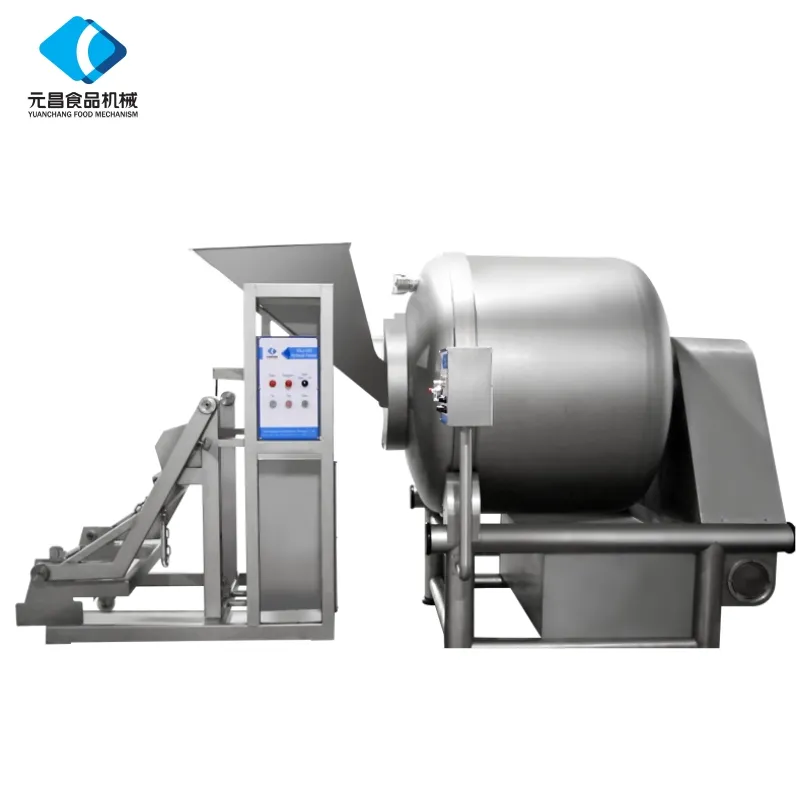
Application Scenarios and Case Studies
The versatility of the vacuum tumbler marinator makes it indispensable across diverse segments of the food industry. Its ability to uniformly marinate, tenderize, and enhance the texture of various protein products provides significant operational and qualitative advantages.
Typical Application Scenarios:
- Poultry Processing: Marinating whole chickens, chicken breasts, wings, and thighs for fried chicken, grilled products, or ready-to-cook meals. The vacuum ensures deep penetration of brines, improving juiciness and flavor.
- Red Meat Processing: Tenderizing beef cuts for steaks, marinating pork for sausages, bacon, or roasts, and enhancing the flavor of lamb products. Vacuum tumbling accelerates the tenderization process, reducing aging time.
- Seafood Processing: Marinating fish fillets, shrimp, and other seafood for improved texture, flavor, and moisture retention, especially crucial for delicate products.
- Vegetable and Plant-Based Protein Processing: While primarily for meat, some applications extend to marinating tough vegetables or plant-based meat alternatives to improve texture and absorb flavors.
- Ready-to-Eat (RTE) Meals: Preparing marinated components for various RTE and convenience food products, where consistency and rapid processing are essential.
Application Case Study: Large-Scale Chicken Processor
A leading poultry processing company, specializing in marinated chicken products for retail and food service, faced challenges with inconsistent marination, lengthy processing times, and significant drip loss. They operated multiple conventional meat tumbler machine units, which required extended marination cycles (up to 8 hours) and still resulted in uneven flavor distribution and moisture loss during cooking.
Solution Implemented: The company upgraded its marination line with three 3000 kg capacity industrial vacuum tumbler marinators equipped with integrated chilling and programmable PLC controls. Each machine was designed with unique internal baffles to optimize product massage and liquid distribution.
Results Achieved:
- Reduced Marination Time: Processing time for a full batch was reduced from 8 hours to an average of 45-60 minutes, representing an 87% reduction.
- Increased Yield: The vacuum process significantly improved marinade absorption, reducing drip loss by an average of 15% and increasing cooked product yield by 3-5%.
- Enhanced Product Quality: Customers reported more consistent flavor, improved tenderness, and juicier products. Internal quality checks confirmed uniform marinade distribution (less than 2% deviation).
- Operational Efficiency: Automated cleaning-in-place (CIP) reduced manual labor and turnaround time between batches by 30%.
- Cost Savings: Energy consumption for marination was optimized, and reduced product waste contributed to a significant return on investment within 18 months.
This case study demonstrates the profound impact advanced vacuum tumbling technology can have on productivity, product quality, and profitability in high-volume food processing environments.

Technical Advantages and Vendor Comparison
The technical advantages of modern vacuum tumbler marinators are multifaceted, offering significant improvements over traditional marination methods. These advantages translate directly into enhanced product quality, increased operational efficiency, and reduced costs.
Key Technical Advantages:
- Accelerated Marination: The vacuum environment physically expands muscle fibers, allowing marinades to penetrate deeper and faster. This dramatically reduces marination cycles from hours to minutes, boosting throughput.
- Superior Product Tenderization: The mechanical action of tumbling, combined with vacuum, breaks down tough muscle tissues, resulting in a significantly more tender product.
- Enhanced Flavor Absorption: Deeper and more uniform penetration of marinades ensures consistent flavor distribution throughout the product, eliminating bland spots.
- Increased Product Yield & Moisture Retention: Vacuum technology minimizes purge and drip loss, locking in moisture and resulting in higher cooked yields and juicier end products.
- Improved Food Safety: Reduced oxygen levels in the vacuum environment inhibit bacterial growth, extending shelf life naturally and contributing to better food safety protocols. Hygienic design with smooth, easily cleanable surfaces further supports this.
- Process Consistency: PLC-controlled parameters (vacuum, speed, time, temperature) ensure repeatable results, reducing variability and waste.
Vendor Comparison: Key Differentiators
When evaluating providers of vacuum tumbler marinators, several factors distinguish leading manufacturers. This comparison highlights common considerations for B2B decision-makers.
| Feature | Leading Vendor (e.g., YC Meat Mech) | Standard/Budget Vendor |
|---|---|---|
| Material Grade | AISI 316L Stainless Steel (food contact), AISI 304 (frame) | Mostly AISI 304, potentially lower grade for non-contact parts |
| Control System | Advanced PLC with HMI, recipe management, data logging, remote access (optional) | Basic analog controls or simpler digital panel, limited programmability |
| Vacuum Pump | High-efficiency, oil-free Busch/Becker/similar, with moisture trap | Generic oil-lubricated pump, potentially lower vacuum stability |
| Sealing Mechanism | Durable, food-grade silicone/EPDM seals, robust lid locking | Basic rubber seals, potentially less durable or harder to maintain |
| Hygiene & Cleaning | Automated CIP, polished internal surfaces (Ra < 0.8 µm), easily accessible for inspection | Manual cleaning required, rougher finishes, potential for hard-to-reach areas |
| Customization | High degree of customization for drum design, capacity, integration features | Limited customization, standard models only |
| Certifications | CE, USDA, FDA, HACCP compliance, ISO 9001 manufacturing | Basic CE, may lack specific food industry compliance |
Customized Solutions for Specific Needs
Recognizing that every food processing operation has unique requirements, leading manufacturers offer extensive customization options for the vacuum tumbler marinator. This ensures that the equipment seamlessly integrates with existing production lines and precisely meets specific product and process demands.
Areas of Customization:
- Capacity and Drum Design: From compact lab-scale units to multi-ton industrial systems. Drum internal baffles can be customized in shape, size, and quantity to suit delicate fish fillets or robust bone-in cuts, optimizing tumbling action for specific products.
- Temperature Control: Integration of jacketed drums for precise temperature control during tumbling, allowing for chilled marination or even cooking processes. This is crucial for maintaining product integrity and safety.
- Automated Loading/Unloading Systems: Custom hoppers, conveyors, and integrated lifting systems to automate product transfer, reducing manual labor and improving hygiene.
- Vacuum System Configuration: Choice of vacuum pump type (e.g., oil-free, liquid ring) and capacity based on required vacuum depth and speed, with optional multi-stage filtration for demanding applications.
- Control System Customization: Tailored PLC programming, integration with plant-wide SCADA systems, custom recipe management interfaces, and multi-language HMI options.
- Material Surface Finish: Specific Ra values (roughness average) for ultra-hygienic applications (e.g., pharmaceutical grade) or specialized anti-adhesion coatings.
- Noise Reduction: Implementation of specialized insulation and motor enclosures for operations in noise-sensitive environments, maintaining worker comfort and compliance.
By engaging with experienced engineers and food technologists, businesses can specify a vacuum tumbler marinator that is not just a piece of equipment, but a fully integrated solution optimized for their unique production requirements, ensuring maximum efficiency and product quality.
Ensuring Trustworthiness: FAQ, Lead Time, Warranty & Support
Building trust with B2B clients requires transparency, clear commitments, and robust support infrastructure. We address common concerns regarding our vacuum tumbler marinators to demonstrate our dedication to customer satisfaction and operational reliability.
Frequently Asked Questions (FAQ)
Q1: What is the typical return on investment (ROI) for a vacuum tumbler?
A1: ROI can typically be achieved within 12-24 months through improved product yield (reducing waste), significant labor savings from automation, reduced marination times, and enhanced product quality leading to increased sales. Specific ROI depends on production volume and current operational costs.
Q2: How does the vacuum system maintain hygiene?
A2: Our vacuum systems utilize oil-free pumps (or liquid ring where preferred) and are equipped with advanced filtration to prevent contamination. The vacuum environment itself limits aerobic bacterial growth. Furthermore, our machines feature integrated CIP systems for automated, thorough cleaning, and all food-contact surfaces are polished to a high sanitary finish.
Q3: Can the machine handle different product types and marinade viscosities?
A3: Yes, our vacuum tumbler marinators are designed for versatility. With variable speed controls, programmable tumbling patterns, and customizable internal drum baffles, they can gently process delicate seafood or vigorously marinate dense red meats. The vacuum system also aids in the efficient absorption of various marinade viscosities.
Lead Time & Fulfillment
Standard models typically have a lead time of 8-12 weeks from order confirmation to shipment, depending on current production schedules. Custom-engineered solutions may require 12-20 weeks to account for design, fabrication, and specialized component sourcing. We maintain a transparent communication channel throughout the fulfillment process, providing regular updates to ensure timely delivery and seamless integration into your operations. All equipment undergoes rigorous pre-shipment testing to ensure readiness upon arrival.
Warranty Commitments
We stand behind the quality and reliability of our equipment. All new vacuum tumbler marinators come with a comprehensive 2-year warranty covering manufacturing defects and critical component failures under normal operating conditions. Extended warranty options are available. This commitment reflects our confidence in our engineering and manufacturing processes, ensuring your investment is protected.
Customer Support & After-Sales Service
Our commitment extends beyond the sale. We offer extensive after-sales support, including:
- Installation and Commissioning: On-site technical assistance for proper setup and calibration.
- Operator Training: Comprehensive training programs for your staff on machine operation, maintenance, and troubleshooting.
- Technical Support: 24/7 hotline and remote diagnostic services for immediate assistance.
- Spare Parts Availability: A readily available inventory of genuine spare parts to minimize downtime.
- Preventive Maintenance Programs: Tailored service contracts to ensure optimal performance and longevity of your equipment.

Conclusion
The vacuum tumbler marinator is an indispensable asset for modern food processing operations, offering unparalleled efficiency, consistency, and product quality in marination and tenderization. Its integration allows businesses to meet stringent food safety standards, reduce operational costs, and satisfy evolving consumer demands for high-quality, perfectly flavored protein products. By investing in advanced vacuum tumbling technology, companies can significantly enhance their competitive edge in a dynamic global market.
References
- Food Processing Technology. "Global Food Processing Machinery Market." Market Research Reports.
- Journal of Food Engineering. "Effects of vacuum tumbling on meat quality." ScienceDirect.
- Food and Drug Administration (FDA). "Food Processing Equipment & Sanitation Guidelines." FDA.gov.
- ISO Standards Organization. "ISO 14159: Safety of machinery — Hygiene requirements for the design of machinery." ISO.org.
-
Discover the Benefits of Vacuum Marinating Machines for Efficient Food ProcessingNewsNov.24,2025
-
The Ultimate Guide to Commercial Chicken Scalders: Efficiency, Sustainability & InnovationNewsNov.23,2025
-
Chicken Harvesting Equipment: Efficient & Humane Solutions for Poultry ProducersNewsNov.22,2025
-
Comprehensive Guide to Meat Processing Plant Equipment | Efficiency, Safety & SustainabilityNewsNov.21,2025
-
Meat Processing Bins: Durable Solutions for Safe & Efficient Meat Handling WorldwideNewsNov.20,2025
-
Best Commercial Marinating Machines for Meat Processing | Efficient & ScalableNewsNov.20,2025



